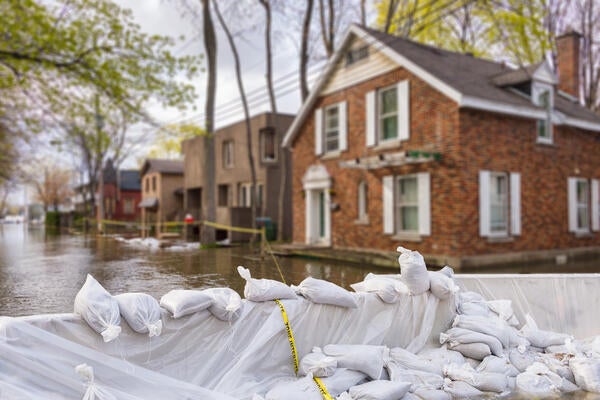
Beyond the pride crosswalk
The art of making meaningful queer spaces in mid-size cities like Kitchener-Waterloo

The art of making meaningful queer spaces in mid-size cities like Kitchener-Waterloo
By Chantal Vallis Faculty of EnvironmentRainbow crosswalks have become both a symbol and a battleground of queer visibility. While some hail them as beacons of safety and inclusivity, others see them as a symbol of tokenism in lieu of more important allyship.

At the heart of this debate is one larger and very important question: “How can we infuse queerness into the fabric of our built environment to enhance representation and inclusivity?” This was a question that Michael Ricci, a master’s student in the School of Urban Planning, explored this past year.
Ricci envisions a future where mid-size cities like Kitchener-Waterloo boast of thriving queer communities that are not confined to the shadows of their larger counterparts like Toronto.
“I don’t think we should limit our experiences of being queer just because we live in a mid-size city,” he says. “Right now, people will travel to Toronto because there is not enough to do here as a queer person.”
His research on queer placemaking in public spaces led him to interview K-W 2SLGBTQIA+ students and urban planning professionals about their opinions and perceptions of being queer in K-W and what it would take to advance inclusive urban design for queer people.
“Many people I talked to said they enjoy being queer in our mid-size town,” he says. “We have a thriving queer community in K-W and they want to stay here, but they also want to see and experience more queer spaces and queer representation.”
Ricci’s research revealed that since the pandemic, there has been a lot of work to build back queer events and increase representation for the community, but a lot happens behind the scenes and through informal community organizing and activation. Therefore, it’s not as out in the open, or as widely supported as it could be. Ricci’s study also echoes a growing sense in the 2SLGBTQIA+ community that the larger K-W community must move beyond popular forms of allyship.
Many participants in the study expressed that they felt pride crosswalks and stickers are preformative and fail to promote acceptance and safety, while most study participants agreed that more permanent art murals and other additions to the built environment where queer people frequent are important to increasing queer visibility.

Murals at Willis Way parkade facilitated by the City of Waterloo are a good example of queer representation in art.
One main finding was events that foster community and solidarity are key opportunities to influence and shape the built environment. Some of these events could be pop-up book fairs, queer marketplaces and other community driven social gatherings that emerge all over the region. Short-term creative solutions like these are needed alongside long-term solutions to create spaces where queer individuals can thrive, regardless of the city they call home.
“In big cities, it is a privilege for many people to find a space where they can be themselves and express their queer identities," Ricci says. “When I do this work, I think about people who live in the suburbs, small cities and towns like I did, and I want to collaborate in designing spaces for them that are safe, accessible and vibrant so they don’t have to leave to find community.”
“It’s vital to make it obvious that we are represented," he urges. “Merging public art within urban planning enables empowerment and celebration. It has the potential to reflect the diversity of queer identifies and also inspire a sense of belonging as communities grow.”

Read more
Here are the people and events behind some of this year’s most compelling Waterloo stories

Read more
Researchers awarded funding to investigate ecology, climate change, repatriation, health and well-being through cultural and historical lens

Read more
Waterloo researchers propose solution to help communities escape the costly cycle of flood damage and rebuilding
The University of Waterloo acknowledges that much of our work takes place on the traditional territory of the Neutral, Anishinaabeg, and Haudenosaunee peoples. Our main campus is situated on the Haldimand Tract, the land granted to the Six Nations that includes six miles on each side of the Grand River. Our active work toward reconciliation takes place across our campuses through research, learning, teaching, and community building, and is co-ordinated within the Office of Indigenous Relations.